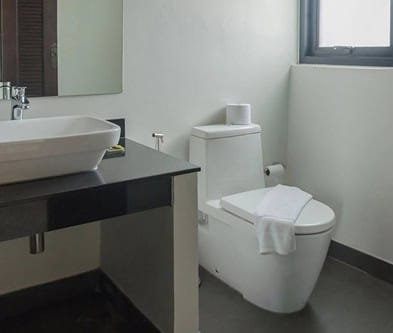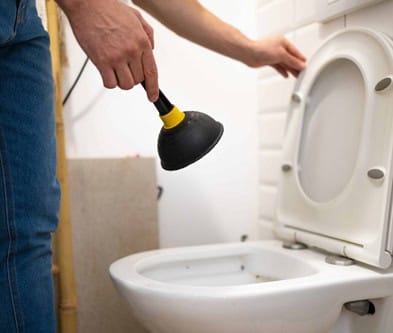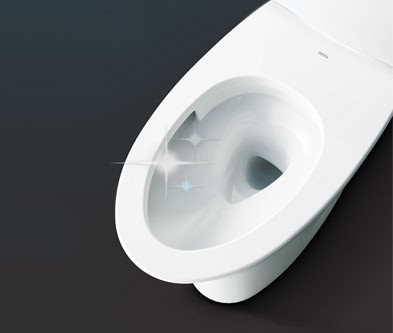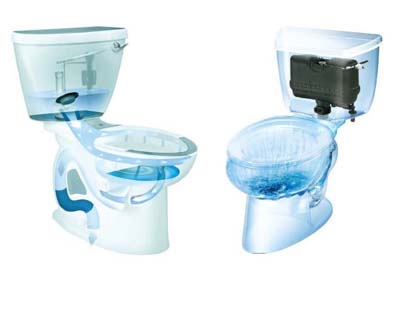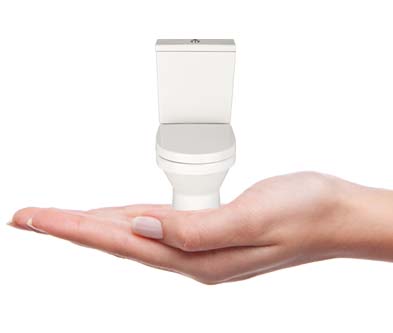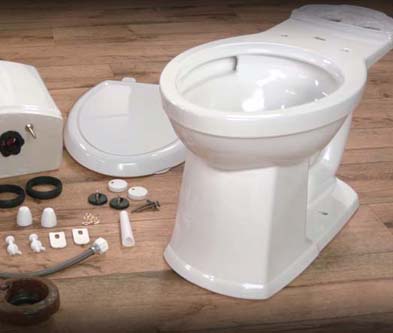Toilet Found! is sustained by readers who made purchases through specific links on this site. Learn more
Childproofing the Bathroom: Ensuring Safety for Your Little Ones

Essential Steps and Tips for Childproofing Your Bathroom
Childproofing the bathroom is about eradicating hazards to protect kids. This task is every parent’s responsibility to ensure a safe environment, minimize risks, and effectively babyproofing one of the most dangerous rooms in the home.
In the first place, kids shouldn’t be allowed in the bathroom without supervision, as unsupervised access can expose them to various hazards such as slippery floors, sharp corners, and dangerous items like razors and cleaning products. Parents should always instill good bathroom safety tips in their children, such as always using a non-slip mat in the bathtub and never reaching for items on high shelves without permission. Additionally, they should teach kids to always close the toilet lid after use and never to play with electrical appliances in the bathroom. These simple but important bathroom safety tips can help prevent accidents and keep children safe in the bathroom.
Bathrooms are full of potential hazards, from slippery floors to sharp corners, hot water, and electrical outlets. While it might seem overwhelming, taking proactive steps to childproof your bathroom can make all the difference in keeping your little ones safe. In addition to installing safety locks on cabinets and putting non-slip mats in the bathtub, it’s important to also maintain bathroom cleanliness to prevent the spread of germs. Some bathroom cleanliness tips include regularly wiping down surfaces, cleaning and disinfecting the toilet and sink, and replacing old or moldy shower curtains. By combining safety measures with good hygiene practices, you can create a safe and healthy environment for your children in the bathroom.
Identifying Bathroom Hazards
The first step in childproofing your bathroom is to identify the potential hazards that exist. Slippery bathroom floors pose a significant risk of accidents, especially for toddlers who are still mastering their balance. The hard surfaces and sharp edges of countertops, sinks, and bathtubs can also present dangers if precautions aren’t taken. Toilets and their functionality can sometimes attract the curiosity of young children, making it important to secure toilet lids to prevent accidents or exploration of unsanitary areas. Installing safety measures like non-slip mats, cabinet locks, and faucet covers can go a long way in reducing these risks and ensuring a safe environment for your child.
Sharp corners on bathroom counters, cabinets, and bathtub edges can cause serious injuries if a child falls or bumps into them. Hot water from the faucet or tub can quickly scald a child’s delicate skin, especially if the water temperature exceeds 120 degrees Fahrenheit (49 degrees Celsius).
Another major hazard is electrical outlets and appliances like curling irons or hair dryers, which can be dangerous if left within reach of small children. Toiletries, cleaning products, and medicines stored in bathroom cabinets and drawers are also hazardous if accessed by curious little hands.
Even everyday items like toilet brushes and razors can pose dangers if not properly stored. The bathroom door itself can become a hazard if a child accidentally locks themselves inside, unable to open the door to prevent anyone from being locked inside.
Preventive Measures for a Safe Bathroom

Creating a safe bathroom environment requires taking deliberate steps to minimize these hazards. Start by adding non-slip mats to bathroom floors and inside the bathtub or shower to prevent slips and falls. Cover sharp corners on bathroom counters, cabinets, and bathtub edges with protective guards to reduce the risk of injury.
Installing child safety locks on bathroom cabinets and drawers can keep dangerous items like cleaning products, razors, and medications out of reach. Consider using a locked cabinet for particularly hazardous items.
To prevent scalding, install anti-scald devices on faucets and tub faucets. These devices help regulate water temperature, ensuring it never gets too hot for your child’s sensitive skin. Additionally, make sure your water heater is set to a safe temperature, no higher than 120 degrees Fahrenheit. This simple adjustment can prevent accidental burns during bath time.

Electrical safety is crucial in the bathroom, especially in the presence of water. Use childproof outlet covers to protect against accidental shocks, and store electrical appliances like curling irons out of reach, ideally unplugged when not in use. Ensure that cords are not dangling where a child can pull them down.
To prevent drowning, never leave your child unsupervised in the bathroom, even for a moment. Consider using toilet seat locks and toilet lid locks to keep the toilet securely closed, as open toilets pose a significant drowning hazard for small children. Bathtubs should also be drained immediately after use to avoid any risk of accidental drowning.
Bathroom Safety Products to Consider
Incorporating bathroom safety products into your childproofing efforts can further enhance the security of your bathroom. Childproof locks for cabinets and drawers are essential for keeping dangerous items like cleaning supplies and toiletries out of reach. Non-slip mats inside the bathtub and on the bathroom floor can help prevent slips and falls, while toilet locks can prevent your child from accessing the toilet.
Temperature-regulating faucets and showerheads are excellent tools for preventing scalding, ensuring that the water temperature remains safe during bath time. Installing a safety faucet or anti-scald device on tub faucets can further protect against accidental burns. Additionally, consider using non-slip step stools that provide safer access for older children while maintaining their independence.
For added security, install door locks that prevent small children from entering the bathroom unsupervised. Hook-and-eye locks or safety plugs can be installed on bathroom doors to prevent your child from entering the bathroom or getting locked inside. Safety professionals also recommend keeping bathroom windows secure and inaccessible to children, as open windows pose a significant fall risk.
Teaching Bathroom Safety

While childproofing the bathroom is essential, educating your children about bathroom safety is equally important. Teach them the importance of never touching electrical outlets or appliances, and explain why they should not open cabinets and drawers.
Supervision is key—never leave small children unattended in the bathroom, even for a brief moment. Make bath time fun yet safe by setting clear boundaries and guidelines.
Encourage your child to always ask for help if they need to use the bathroom, especially if they are still too young to understand the potential hazards. Explain why certain items, like razors and cleaning products, are dangerous and should not be touched. Reinforce the importance of closing the toilet lid and why it’s important to avoid playing with water or bathroom fixtures.
Adapting as They Grow
As your child grows, their needs and capabilities will change, and so should your approach to bathroom safety. Transitioning from babyproofing to childproofing involves reassessing potential hazards and adjusting safety measures accordingly.
For instance, as your toddler becomes more independent, you might need to install additional child safety locks on bathroom cabinets and drawers or consider using a step stool to help them safely reach the sink.
Regularly inspect your bathroom for new hazards as your child grows, such as items left on bathroom counters or within easy reach. Make sure your bathroom remains a safe place for your little ones by continually updating your childproofing efforts to match their developmental stage.
Conclusion
Childproofing your bathroom is about more than just babyproofing—it’s about ensuring bathroom safety by addressing potential hazards and using effective bathroom safety products. From installing childproof locks on cabinets and drawers to adding non-slip mats and covering sharp corners, every step you take contributes to creating a safer bathroom environment.
Remember to educate your children on bathroom safety, supervise them at all times, and regularly update your childproofing measures as they grow.
By taking these proactive steps, you can minimize the risk of accidents and keep your little ones safe in one of the most hazardous areas of your home. Ensuring the safety of your bathroom is not just a one-time task but an ongoing commitment to your child’s well-being.
Resources

